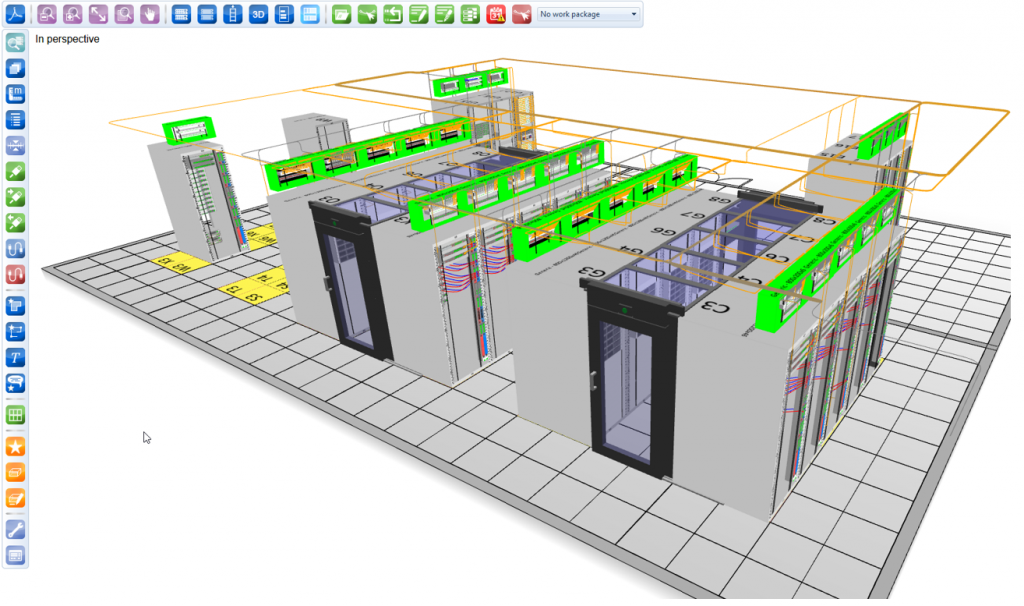The reliable management of connectivity in today’s data centers regarding different assets, DC rooms and even different DC-sites distant from each other is getting more and more complex. Both precise documentation as well as planning of such cable paths is indispensable to be able to provide a professional answer to the ever-increasing lack of time and resources in managing data centers.
The cables themselves- of which type ever they might be, finally represent only the medium of connectivity; the far more important aspect is the cable path itself. Is it running across various assets in one DC room, across several rooms, or does it connect various DC sites being quite distant from each other? The appropriate answer to all these questions can be found in DAMS C, as it delivers precise documentation, breath-taking visualization and efficient reporting. Our users see much more than just the cable, but each and every cable fiber as well as their concrete path. Thus, the cable path can include different cable types, for example from an MP08 to several LC Duplex.
DAMS C displays graphically the cable path across various DC rooms, and, as a matter of fact, across different DC locations. This is of great benefit to the user, as it is immediately clear if a rack located in data center A and connected to Data Center D, is connected via Building C and not via Building B.
Another significant advantage for the DC Manager is the fact that he can save cable connections in case he has got enough fibers left in another space. In addition to that, DC Managers can directly optimize the use of existing cables and save on precious resources thanks to the best-in-class planning of cable paths DAMS C provides. This appreciated functionality is supported by the automatic routing the system allows.
The visual representation of cable paths enables users to easily check on redundancies required in data centers. The graphical display of cables paths spanning over both DC rooms and DC sites thus delivers additional benefit in supporting a major DC Management Process.
